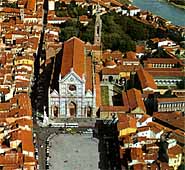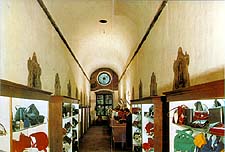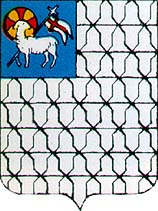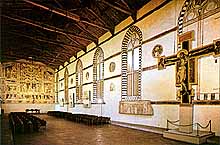
The Convent and Cloisters
The construction of the Franciscan Convent, which was to host a steadily growing community of monks, went rapidly ahead, at the same time as the new Basilica that Arnolfo had started in 1294. The monks were joined by the "Terziari", secular followers of St. Francis, who used to meet in the Castellani Chapel. Members included Dante Alighieri and the Blessed Umiliana dei Cerchi, the first and most famous of the Franciscan tertiaries, who died in 1246.
It was also necessary to provide for two separate schools: a lay school and a theological school (the General School of the Order), where apparently Dante and Giovanni de' Medici, later Pope Leo X, studied, as well as Luca Pacioli, the first mathematician to teach the rules of algebra, and the future Popes Sixtus IV, Sixtus V and Clement XIV.
Room was also needed for the Library, which was founded in around the mid 13th century by Fra Guido della Frassa, who copied and collected the illuminated manuscripts, and is considered to be almost on a par with that of the Laurentian Library in San Lorenzo: we can get an idea of its wealth from the fact that, when it was dismantled in the last century, 781 "examples" from among its illuminated manuscripts were sent to the National Library.
The Convent therefore needed to find added space. The 13th century constructions were therefore altered and others built on to them; these became larger and larger, to start with around the first cloister, then around the Greater Cloister (designed by Brunelleschi) and eventually at the rear of the church. Here the limited development of the area of the apse, due to its simple "T" design (a reference to the Cross on which Christ died), made it possible to find large areas that could be used both for building as well as for gardens and growing vegetables.

The
ex dormitory of the Convent
We can get a suggestive view of this ancient area today on entering the gate in Via San Giuseppe (number 5/r), which leads into a garden enclosed by the apse of the basilica and some of the convent buildings. These also include the old dormitory which has been used for many years by the Leather School.
The Guild of Furriers, the seventh and last of the Major Guilds to take part in the government of the city, existed in Florence right from the dawn of the Republic. The Furriers were important traders with the East and Northern Europe, importing over twenty different kinds of skins and furs. The skins, which all came from rare animals, were purchased untreated and then dressed and beautifully assembled by the Florentine craftsmen, who transformed them - then as today - into magnificent pieces of clothing for men and women. Their coat of arms was formed by a blue square with the Agnus Dei (in the top left-hand corner) on a black and white "furred" field.

The Coat of Arms of the Furriers
The garden entrance into the Leather School workroom takes the visitor along a long corridor with what were once the austere cells of the monks opening off it; unchanged structurally, today they have been transformed into laboratories or showrooms or for the sale of the finished products. A larger room with a large grey stone fireplace, decorated with the Medici coat-of-arms, at the end of the corridor shows that this is part of the area built under the patronage of Cosimo "the Elder" de' Medici.

Museum
of S.Croce, Refectory
By continuing in the same "anti-clockwise" direction, we next come to a small courtyard, overlooked by the cells, which leads into another corridor that links up the righthand transept of the Basilica with the sacristy and the Novitiate Chapel: a pure and simple style of architecture that was created for Cosimo by by Michelozzo, his favourite architect, in around 1445.
The rooms that today contain the Museum of Santa Croce, including the Refectory with the great fresco of Taddeo Gaddi, and the Cerchi Chapel, built for the Blessed Umiliana, were once also part of the old Convent (perhaps the oldest part of the whole building), while the Pazzi Chapel was used as the Chapter House. The first cloister, which can be reached directly from Piazza Santa Croce, was, up until 1782, the seat of the Tribunal of the Inquisition, which - apparently - was less severe than the one held by its Dominican "rivals" at Santa Maria Novella.
